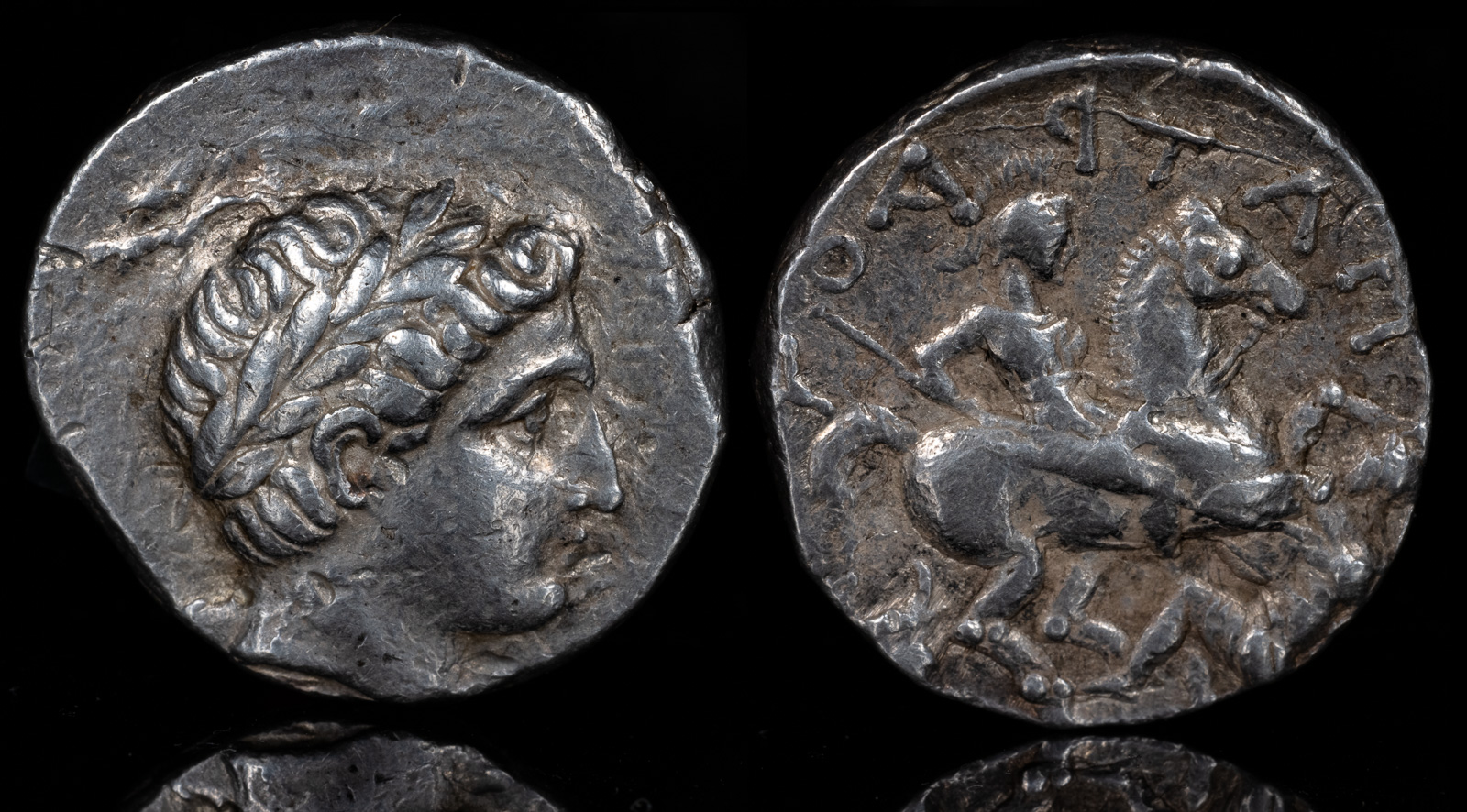
Kings of Paeonia, Patraos
AR Tetradrachm 12.46g, 24mm, 1h.
Uncertain Paeonian mint (Astibus or Damastion?) circa 335-315 BCE
Laureate head of Apollo to right / Warrior on horse rearing to right, spearing enemy who defends himself with raised shield; bukranion to left, ΠATPAOY (retrograde) around.
Paeonian Hoard I, 227 (same dies).
Although Patraos must have certainly dealt with both Philip II and Alexander III, the main reason I purchased this coin was the image. It so perfectly fits in with the times. However, it’s been often misunderstood.
For some time, the horseman in the reverse was thought to have been Ariston, who served admirably under Alexander the Great. During the Battle of Gaugamela, he chased down and beheaded one of the Persian leaders, then presented it to Alexander.
It is highly unlikely that this image is him. First of all, no king is going to put his brother on a coin. That’s just asking him to come take your kingdom and is stated boldly in “Kingship for Dummies”, which every ancient king had. Secondly, and this is more evident on other copies of the coin, some of the soldiers have Macedonian shields.
The Paeonians had long resented the Macedonians, so this makes sense. Still, the image of cavalry running over a helpless infantryman must have occurred countless times back then. Although I knew the horseman wasn’t Ariston, I still felt it the coin most symbolic of the numerous battles.
Note that one rare feature of this coin is you can read the full name of Patraos. On most copies, the name is completely cut off. I have no idea, though, why it’s backwards. Maybe the die engraver had dyslexia. Maybe it just seemed a cool thing to do.